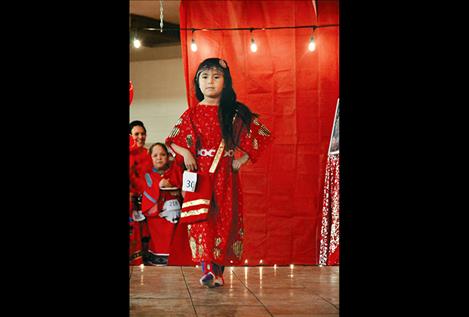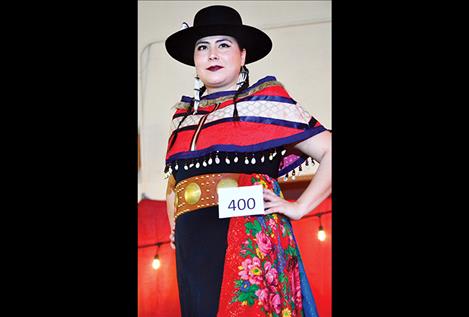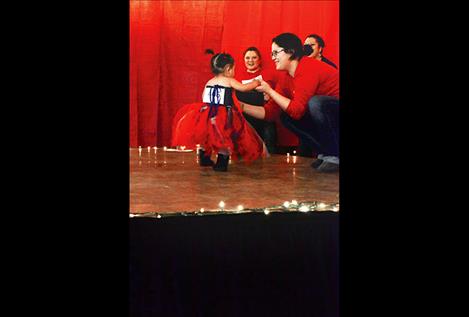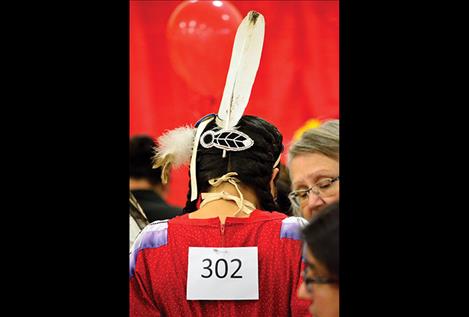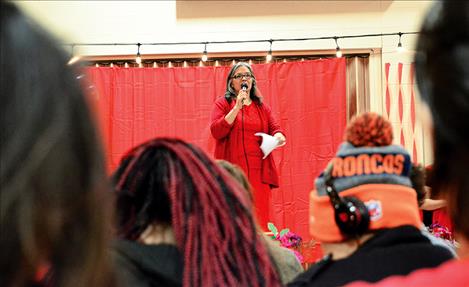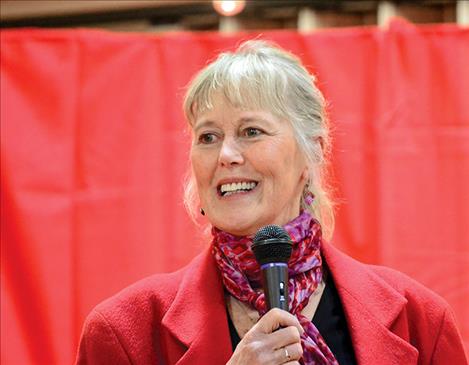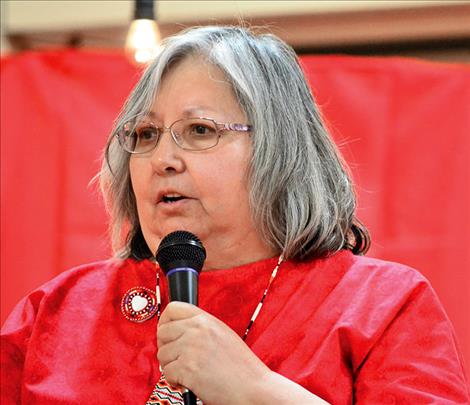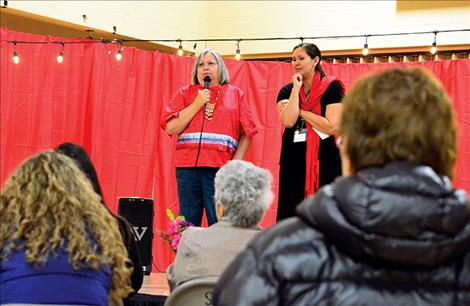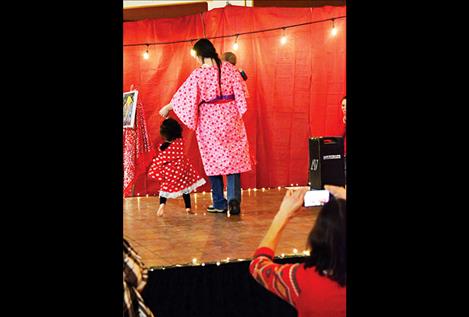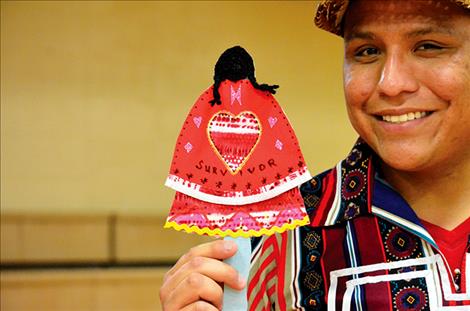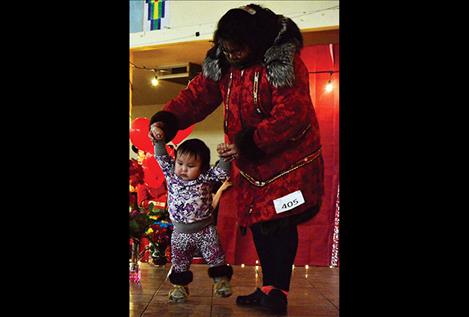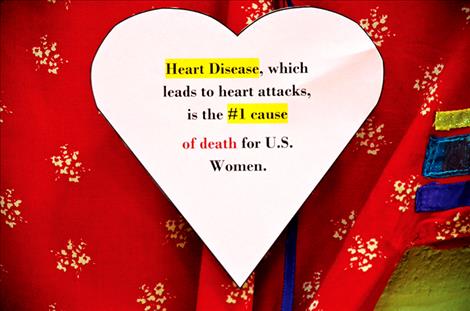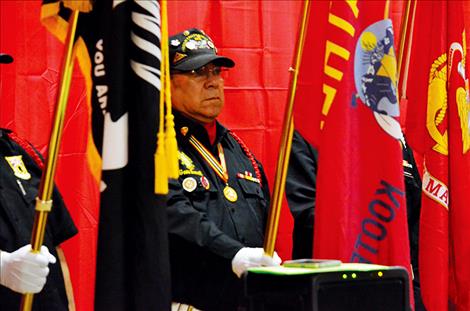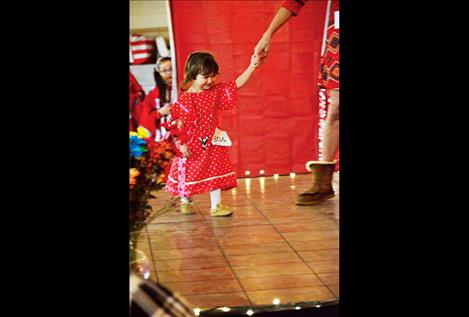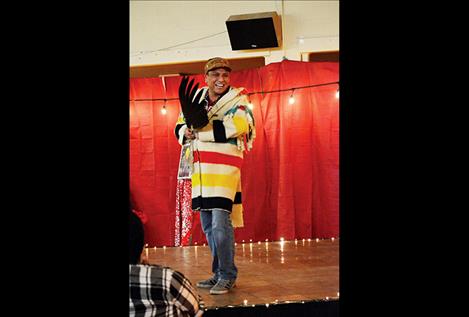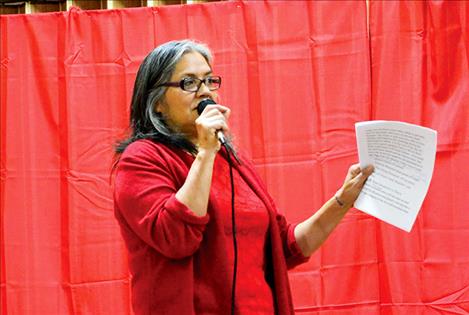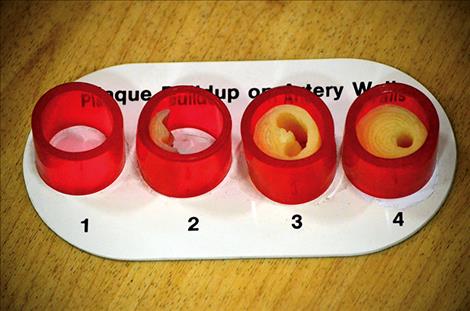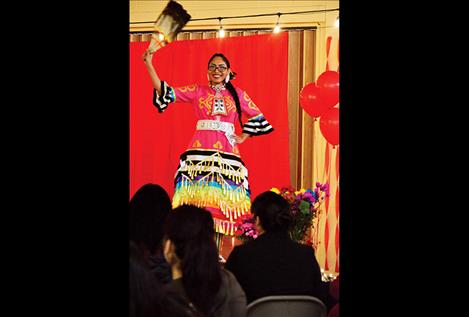Event focuses on saving women’s lives
Hey savvy news reader! Thanks for choosing local.
You are now reading
1 of 3 free articles.
ST. IGNATIUS – The number one killer of women brought people together at the community center on Friday for a fashion show and health fair in an effort to bring awareness to the issue.
Confederated Salish and Kootenai Tribal representative Patty Stevens spoke to a crowd of people at the event.
“Go Red for Women is a national campaign to bring awareness to women and the people who love them about heart disease,” she said.
According to the Centers for Disease Control and Prevention heart disease contributes to the deaths of one in four women, and it’s second only to cancer as the leading cause of death for American Indian women.
“Almost two-thirds of women who die suddenly of coronary heart disease have no previous symptoms,” she said.
Several booths were set up at the event for people to learn about the risks contributing to heart disease including high blood pressure, high cholesterol, and smoking. Risk factors also include poor diet, physical inactivity, and diabetes.
CSKT Registered Dietitian Brenda Bodnar said women face several obstacles when it comes to getting care for complications with heart disease, which might be contributing to an increase in the number of deaths from it. She said women sometimes hesitate to go to the hospital for life-saving care because they can’t leave their children or grandchildren and they don’t want to “be a bother” and ask for help.
“Women are good at helping others, but they sometimes don’t take care of themselves,” she said.
Two women took to the stage to speak to the crowd about their struggles with heart problems. Sharon Toussaint is an avid runner and often trains for half-marathons.
“Despite doing everything right, I had an unexpected heart attack,” she said. “I survived because I was healthy.”
Her heart attack wasn’t caused by plaque buildup. And the symptoms of her heart attack were different from what a man might experience. She said she was in the mountains with her family, far from a hospital, and she experienced a “kink” in one of her heart valves.
“I was getting ready to serve a meal and I felt a strange feeling in my throat,” she said.
The sensation turned into nausea so she went to sleep. The next day she felt really tired while shopping in the grocery store. The thought of paying her insurance company a high deductible kept her from going straight to the emergency room, but that is exactly where she ended up. She was told that she had minor damage to her heart. The damage could have been worse if her heart wasn’t strong.
“The benefits of exercise are remarkable,” she said.
“The heart is a muscle and it needs to be exercised.”
Debby Courville spoke about her battle with heart issues. She is thankful to be alive after a diagnosis of congestive heart failure about 17 years ago. She said her heart doesn’t pump blood as well as it should, but she works hard to stay healthy with diet and exercise so she can take care of her grandkids. Despite her effort, she had a heart attack a few years ago. “My heart felt like it exploded,” she said. She eventually got a pacemaker.
She said her condition would be worse if she didn’t manage her diet with fresh fruits, vegetables, and no salt. And she also credits her survival to the support of her elders.
“It’s a miracle I’m not on oxygen, using a walker,” she said.
After the speeches, people walked around to learn more about heart disease at different stations. Tribal Health Director of Nursing Chelsea Kleinmeyer had people practice Hands-Only CPR, a technique supported by the American Heart Association for those that don’t know CPR.
Most people who experience cardiac arrest at home, work, or in a public location die because they don’t receive immediate CPR from someone at the scene, according to AHA. They encourage people to not be a bystander, and to not be afraid — taking action can only help.
The technique involves first calling 911 for emergency help and then, “push hard and fast on the center of the chest to the beat of any tune that has 100 to 120 beats per minute.” Kleinmeyer said “Stayin’ Alive” is a good song to use.
Diabetic Nurse Educator Angela Nicolai said people need to seek support from healthcare professionals if they suspect they have diabetes or a family history of it. Diabetes is one of the risk factors contributing to heart disease. She said support and education is available at the CSKT Tribal Health Department.
Dental hygiene was another important factor in heart health presented at the event. Periodontal disease can affect the heart.
Louise Mitchell with CSKT WIC explained to people that beans have more fiber than oatmeal, and fiber is needed for a health heart. “Fiber grabs cholesterol in your blood for good heart health,” Mitchell said.
After lunch, the lights dimmed and a fashion show started. Event organizer Jamie Lozeau said Tribal Health sponsored the event, and they put their own twist on the national campaign to bring awareness to heart disease with fashion designs and crafts inspired by Native American culture.
Woman and men walked the stage wearing outfits they designed with Go Red for Women in mind. Children also walked the stage wearing different designs. The categories included everything from traditional to contemporary.
Mariah Friedlander wore a black skirt and a top with red accents, trimmed with cowry shells. The “camp hat” was her favorite element.
“I was inspired by high fashion and indigenous heritage,” she said. “I also wanted to bring awareness to heart disease.”















